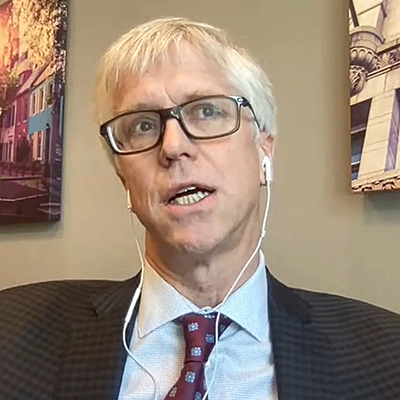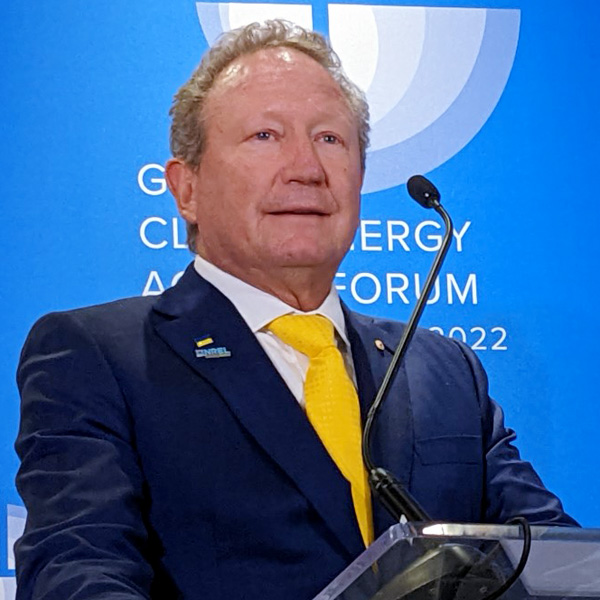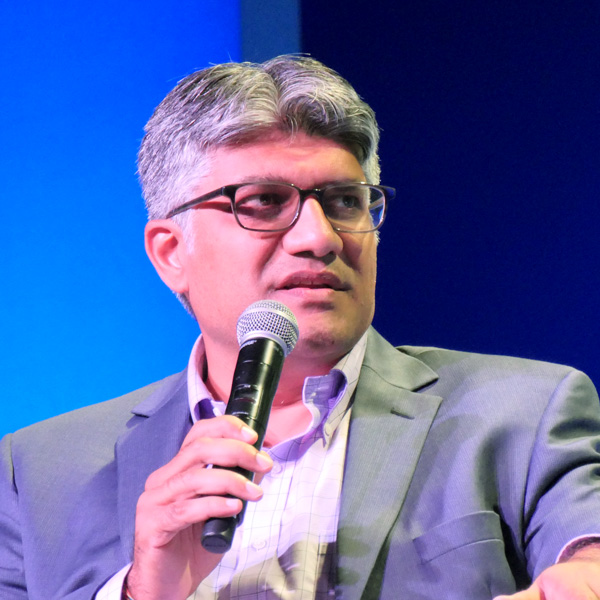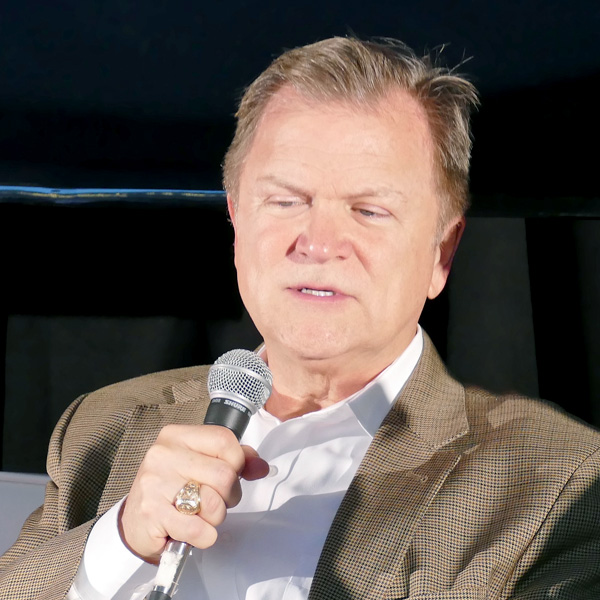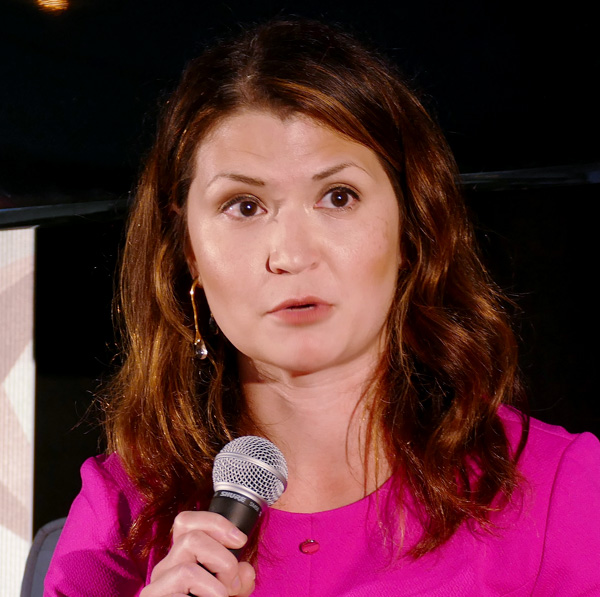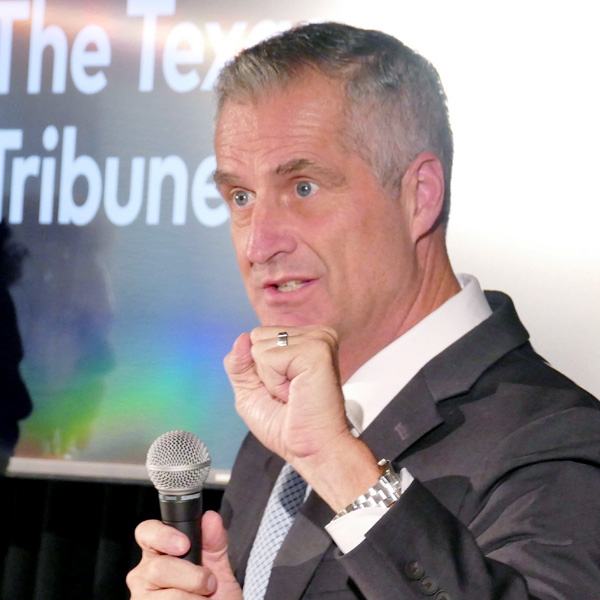PITTSBURGH — More than 6,000 people from 34 countries came to the Steel City last week for the Global Clean Energy Action Forum, which provided a preview of the national and international climate commitments that will be brought forward at the 27th UN Climate Conference of the Parties (COP27) set for Sharm El Sheikh, Egypt, in November.
Here’s some of the highlights of what we heard.
Gates Excited by Federal Funding, Concerned About Reliability
Since Bill Gates founded Breakthrough Energy in 2015 to help create new technologies and eliminate the “green premium,” it has helped to finance 100 companies.
“The big positive surprise is that when we formed this company that would only invest in things that would have dramatic change for climate, that we had no problem finding those companies,” Gates said in an interview with Energy Secretary Jennifer Granholm. “My biggest fear was we’d raise the money and say, ‘OK, here we go.’ And then people would say, ‘Are you kidding? You want to make steel with no emissions? That just can’t be done.’”
Among its investments are four hydrogen production companies that will take advantage of the tax credits in the new Inflation Reduction Act.
While Gates is excited by what the federal government’s funding will mean for new clean technologies, he worries that many people are underestimating the reliability challenges of the transition to a “green grid” under decarbonization and electrification.
“Based on their weather, geography, latitude … the nature of that clean grid, how you generate power, how you maintain reliability [will vary]. And people are very naive about how hard it is — that in very cold periods you to tend not to have any sun or wind and in very hot periods you tend not to have wind,” he said. “Take just the heating load. If you move that over to electricity to make it zero emission, it is absolutely gigantic. I mean it’s a peak that the electricity system never sees — that kind of a range of non-sheddable demand, because you’re talking about whether people freeze to death or not. …
“Without nuclear, if we try to do this without building a lot of onshore renewables, it’s far more difficult than people think,” he added.
Federal Government Flexes its Spending
The U.S. has begun “moving the needle” on electric vehicle sales in 2022, with EVs representing about 13% of light-duty purchases (excluding the U.S. Postal Service) this year, up from about 1.5% in 2021, said Andrew Mayock, federal chief sustainability officer for the White House.
With a fleet of about 640,000 vehicles, the government turns over about 50,000 vehicles a year, including 30,000 light-duty vehicles.
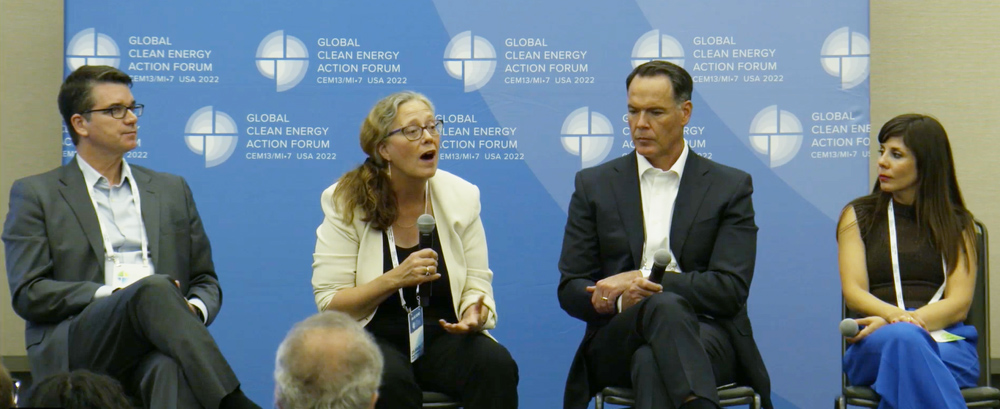
The Postal Service represents one-third of the fleet. “And they’ve moved their commitment — just over the past year — from a 10% commitment to a 20% commitment to then announcing a 40% commitment to electrifying the fleet two weeks before the [Inflation Reduction Act] was passed and provided them another $3 billion to accelerate their work,” he said.
Mayock also spoke about the government’s effort to meet President Biden’s pledge to move to carbon-free electricity for all operations by 2030.
He said the federal government — the largest electricity buyer in the U.S. at 54 TWh a year — is taking guidance from the Clean Energy Buyers Association, a group of nearly 300 energy customers and partners committed to reaching a 90% carbon-free U.S. electricity system by 2030.
The group’s members have procured more than 52 GW of new, utility-scale renewable energy since 2014 — almost 40% of the clean energy capacity added over the period.
“We take a look at that playbook … and we’re gonna customize it to our U.S. government perspective and go into the market and demand as a customer clean electricity like our corporate colleagues have,” he said.
Energy Transition as ‘Peace’ Work
Granholm was ubiquitous at the conference, which she said attracted more than 6,000 people from 34 countries. “This is … not about debating targets anymore. It’s about implementation. It’s about results. It’s about action,” she said.
“Vladimir Putin has shown autocrats everywhere that the world’s overreliance on fossil energy can be weaponized against us. And just as he underestimated Ukraine’s ferocious resolve, he underestimated the international community’s commitment and resolve for our clean energy future,” she said. “Now we see that more than just the key to solving climate change, the energy transition — making our nations secure by deploying our own clean energy — could be the great peace project of our time.”
At the forum’s opening reception on Sept. 21, Granholm also answered skeptics, “those who have been saying, ‘Oh, that clean energy economy, that renewable stuff, that just makes things more volatile, less sure.’ … What could be less volatile [than] renewable energy, when you see the prices continually move, but they’re going down. …
“And of course, the volatility of the fossil fuel market across the world now demonstrates … how important this is. It steeled our resolve,” she said.
Innovative Thinking Needed to Reduce Concrete Emissions
Chris Ward, CEO of cement and concrete producer Lehigh Hanson, said efforts to decarbonize the industry are being slowed by reluctance of engineers and others to accept change.
“We’re a cement manufacturer, but we’re also a concrete producer,” he said. “And we deliver a lot of concrete to those construction jobs. …
“The specifiers and engineers have to keep an open mind to new products,” he said. “Oftentimes, a hurdle that we have as a concrete manufacturer is that the specifiers and the engineers don’t want to move off what they’ve always done.”
Ward said two-thirds of the industry’s emissions come from the process itself, not from combustion. “So for us, it’s about infrastructure. It’s about investment. It’s about government policy that will step in and really help us make a step change in what we’re doing and give us the confidence to go out and make some of these step-change mega projects in partnership with the government in order to really drive improvement.”
In the meantime, Ward said, the industry is increasing its transparency. “Within 12 months, you should be able to see exactly what attributes of every cubic meter or cubic yard of concrete that delivers to a construction site, what the global warming potential is of that material,” he said.
Rebirth of US Nuclear Power
Kirsty Gogan, founder and managing partner of London-based TerraPraxis and an adviser to the British government, said nuclear power has a chance of a comeback in the U.S. with the placement of small modular reactors or advanced reactors in properties that were once coal-fired power plants, complete with high-voltage lines to the grid.
“We’re seeing incredible demand for coal-to-nuclear,” she said during a discussion led by the nuclear office of the U.S. Department of Energy. “There’s recognition in these communities about the potential to create a future for decades more of operations and for high-paying jobs. The utilities like it because they want to continue supplying reliable, dispatchable energy without emissions. …
“The question is, how do we do it quickly enough and at the scale needed. We’re working on a new system for repairing [the buildings that housed] coal-fired boilers … using a standardized building designed for manufacturing assembly.”
Last week, the DOE released a report concluding that “hundreds of coal plant sites across the country are eligible and appropriate for potential nuclear power plant sites [and] that 80% of the existing coal plants may be appropriate for this kind of transition,” said Kathryn Huff, assistant secretary for the Office of Nuclear Energy at the DOE and a nuclear engineer. “The report also found that using existing buildings and some of the electrical equipment would create significant savings.”
Gogan said the DOE should have little trouble finding former coal plant communities interested in nuclear power. “It’s interesting to see how many communities are already overturning historical moratoriums on nuclear in many, many states around the country.”
The Inflation Reduction Act allocated $250 billion for repurposing fossil fuel infrastructure, Huff said. That could include repairing coal plants, but the applications for that money need to be made by Dec. 31, 2026.
Still up in the air is how the Nuclear Regulatory Commission will deal with licensing and training of reactor operators.
GM Revving Up EV Manufacturing to 50% of US Vehicle Sales by 2030
GM chief economist Elaine Buckberg said the company is aiming to sell one million EVs in North America in 2025 and is projecting that by 2030, half of its annual U.S. sales will be electric. The company has committed $750 million to assist in the construction of public charging stations. GM has partnered with Pilot Flying J to build 2,000 fast charging stalls along major highways, all powered by renewable energy. The company is also collaborating with EVGo to build 3,250 charging stations in major metropolitan areas by 2026 and working with its local dealer network to locate another 40,000 public chargers in underserved parts of cities and in rural areas.
The Infrastructure Investment and Jobs Act allocated $7.5 billion to build out a network of 500,000 EV chargers, which GM supports, she said as an example of how the public benefit (fighting climate change) exceeds the private benefits involved in the federal subsidies to build EV charging stations.
Buckberg’s comments came during a fast-paced panel discussion focused on how to accelerate the replacement of conventional gasoline and diesel vehicles with electric power trains, a transition which several European participants pointed out will reduce the need to import oil and refined products. Not discussed during the conversation was how local utilities will be involved.
A Call to Action
The GCEAF also included meetings of the Clean Energy Ministerial (CEM), an international consortium started during the Obama administration, and Mission Innovation — both of which were focused on new initiatives and commitments to be carried forward to COP27 in Egypt.
At the CEM’s opening session, Fatih Birol, executive director of the International Energy Agency, said Russia’s invasion of Ukraine had triggered “the first true global energy crisis,” but also “a turning point in the history of energy.”
He pointed to the passage of the Inflation Reduction Act as a strong reason for optimism. “It is not big news; it is very big news,” Birol said. “When you get the numbers, 400 billion U.S. dollars for clean energy, and it will be multiplied by the private money. In my view, my personal view, it is the single most important action on global energy and climate after Paris 2015,” when the Paris Climate Accord was signed, committing nations around the world to limiting global warming to 1.5 degrees C.
While hailing the IRA as “an amazing piece of legislation,” U.S. Special Envoy for Climate John Kerry stressed the critical importance of private sector investment.
“No government is going to solve this problem. No government has enough money to be able to solve this problem,” Kerry said, pointing to figures from the UN and IEA estimating that up to $4.5 trillion in clean energy investment per year will be needed over the next three years to reach the world’s climate goals.
“The private sector is the entity that has the trillions of dollars,” he said, but it’s “not deployable. It’s there sort of in asset management hands. But these are going to have to be bankable deals, which means our trade is going to be making more bankable deals faster, and engineering with countries the ability to streamline decision-making, to get the playing field to be one where contracts and decision-making at one-stop-shops and so forth, are available. This can happen.”
‘Mother, May I?’
What will the grid of the future look like, and what will be needed to move beyond today’s interconnection issues?
Speaking at a panel on the grid of the future, Exelon COO Calvin Butler stressed that a clean grid must also be a reliable grid. Utilities are the providers of both first and last resort, Butler said. “You don’t get to this [energy] transition or transformation without us.”
Exelon has a $29 billion capital plan for the next four years, Butler said. “People ask, ‘Is that about reliability or is that about bringing distributed energy resources onto the system?’ The answer is yes,” he said. “Because a more resilient system allows you to have that bidirectional communication, allows your IT systems to talk; it allows the security of the network. You can’t get there without one.”
But Jeff Weiss, CEO of Distributed Sun, a community solar developer based in Washington, D.C., said utilities’ interconnection processes are still slowing the transition.
“Most people doing development and with capital get to the point that they say to the utility, ‘Mother, may I, pretty please, with sugar on top ― I have an opportunity ― may I please touch your grid?’ Generally speaking, the answer is ‘No! Keep your hands off my grid. … I need my grid to work.’”
Still, after working with utilities in 15 states, Weiss believes “there’s actually a good partnership to be had. We get them … to understand that what we’re really doing together — and we can help you through the door too — is the frontline of innovation. This is what the 21st century is all about; it’s about grid upgrades. We need you all to rebuild the transmission grid.”

